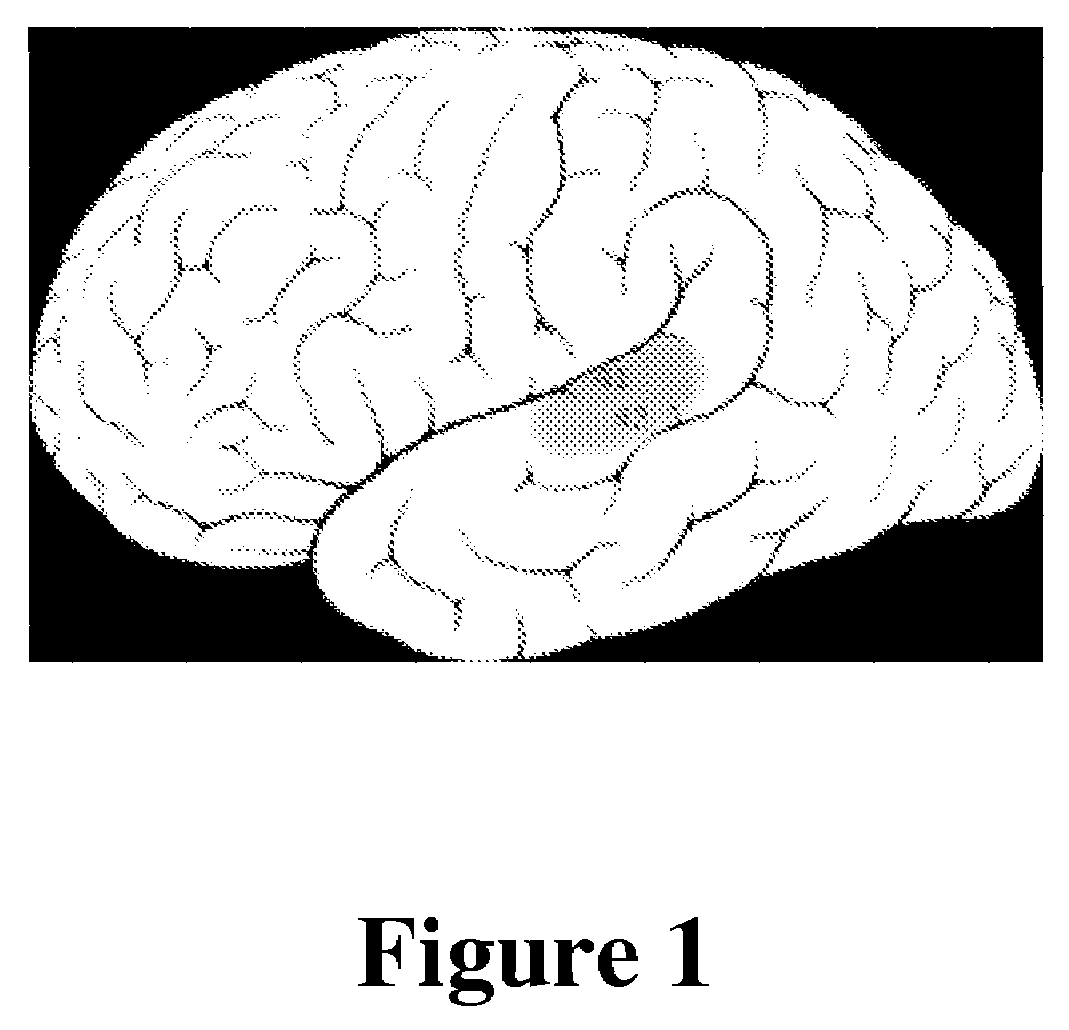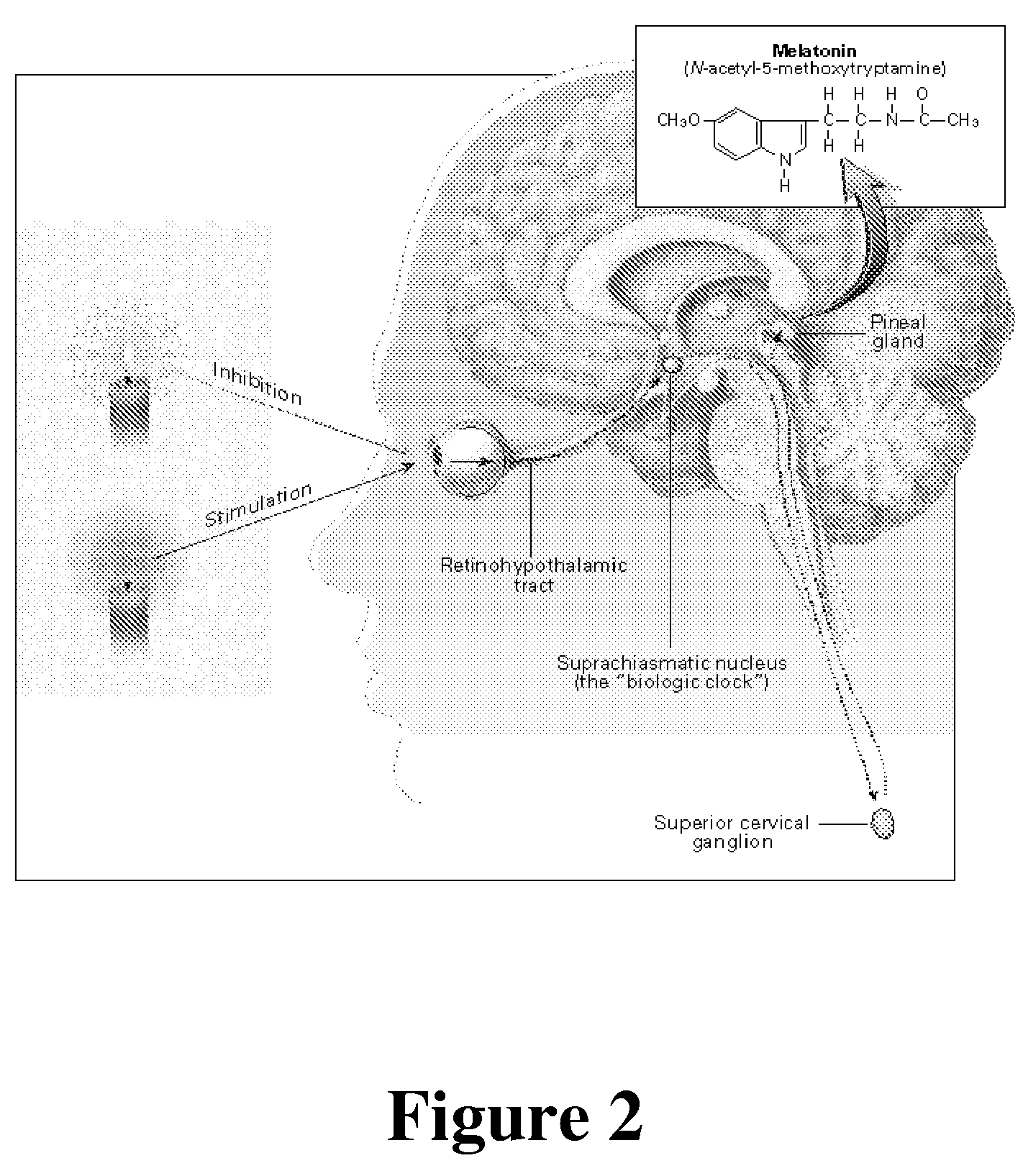Suprachiasmatic Nucleus Inducing, Melatonin Suppressing Light Emitting Device to Enhance Wake Cycle
a technology of melatonin and light emitting device, which is applied in the field of melatonin suppress melatonin inducing light emitting device to enhance wake cycle, can solve the problems of annoying alarm clocks and loud noise, and achieve the effect of depressing melatonin levels
- Summary
- Abstract
- Description
- Claims
- Application Information
AI Technical Summary
Benefits of technology
Problems solved by technology
Method used
Image
Examples
embodiments
[0041]In one embodiment the device is a face covering device. In another embodiment the device is a mask. In another embodiment the device is a shield. In another embodiment the device is a free-standing device. In another embodiment the device is a lamp. In another embodiment the device is a pillow case. In another embodiment the device is wall-mounted device. In another embodiment the device is a pair of glasses. In another embodiment the device is a television. In another embodiment the device is a plasma screen. In another embodiment the device is a LCD screen.
[0042]In one embodiment the band is elastic. In another embodiment the band is cloth. In another embodiment the band is plastic. In another embodiment the band is a string. In another embodiment the band is rubber. In another embodiment the band is a cord. In another embodiment the band is a flexible material.
[0043]In one embodiment the attachment is Velcro. In another embodiment the attachment is adhesive. In another embo...
PUM
 Login to View More
Login to View More Abstract
Description
Claims
Application Information
 Login to View More
Login to View More - R&D
- Intellectual Property
- Life Sciences
- Materials
- Tech Scout
- Unparalleled Data Quality
- Higher Quality Content
- 60% Fewer Hallucinations
Browse by: Latest US Patents, China's latest patents, Technical Efficacy Thesaurus, Application Domain, Technology Topic, Popular Technical Reports.
© 2025 PatSnap. All rights reserved.Legal|Privacy policy|Modern Slavery Act Transparency Statement|Sitemap|About US| Contact US: help@patsnap.com



